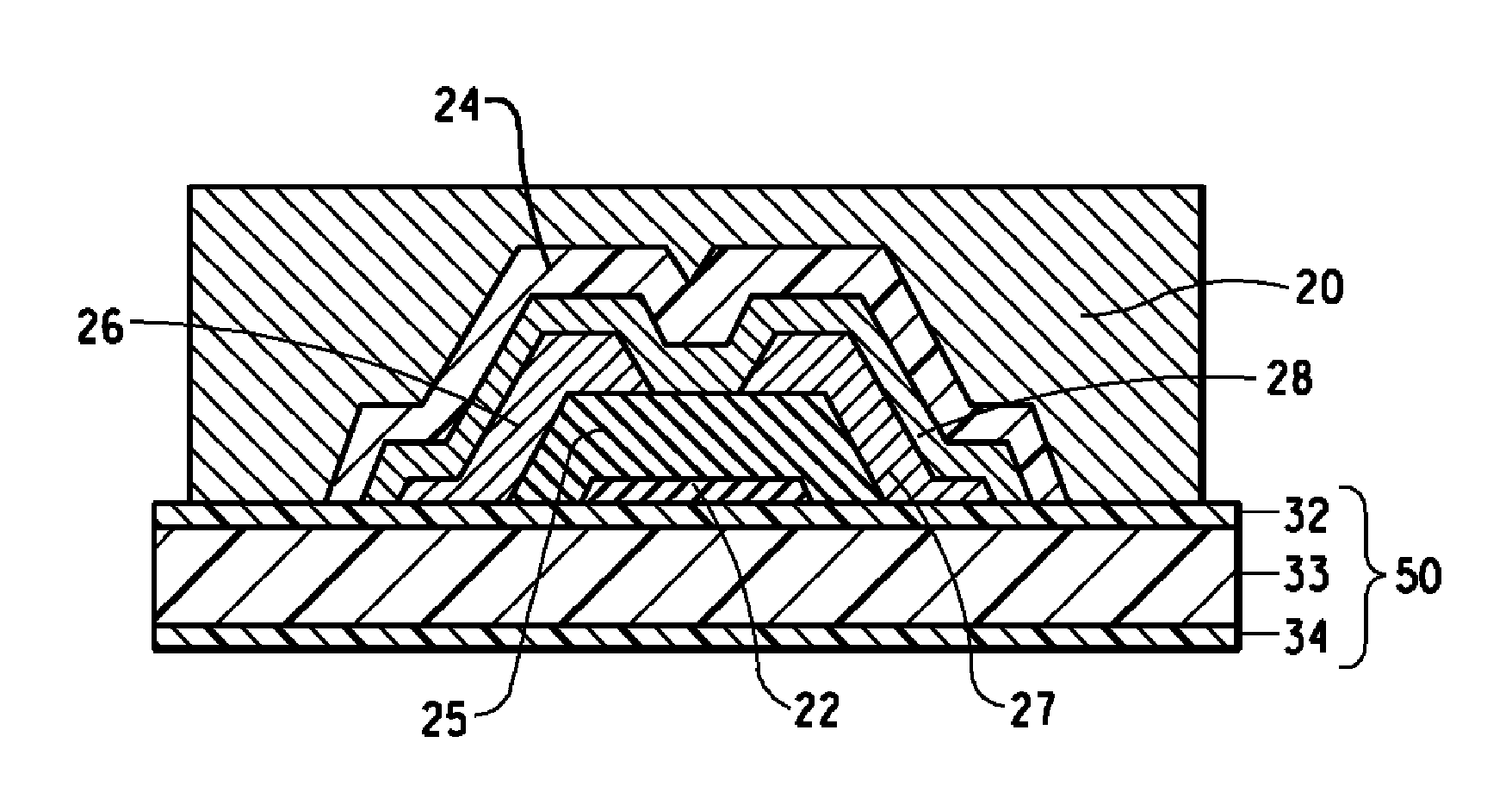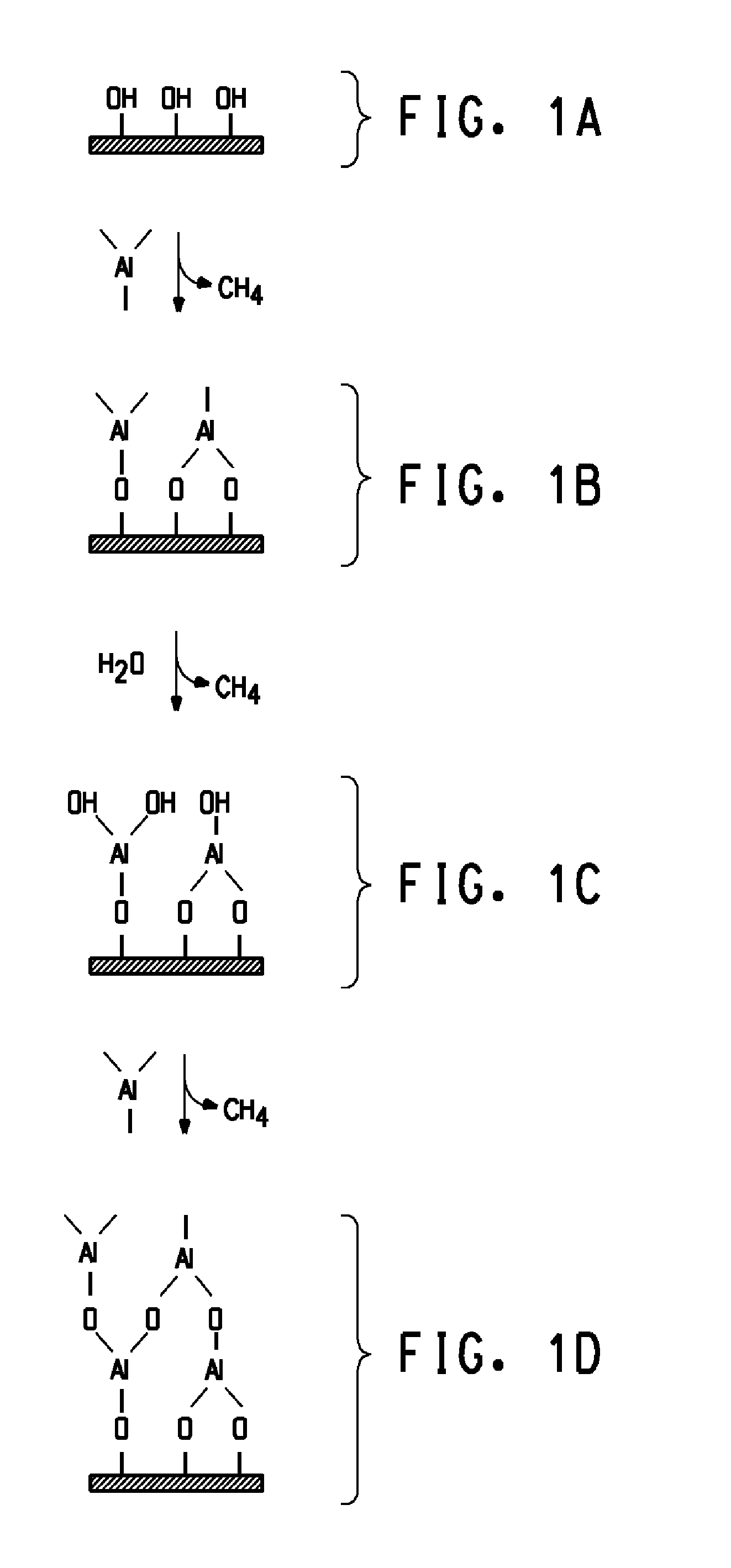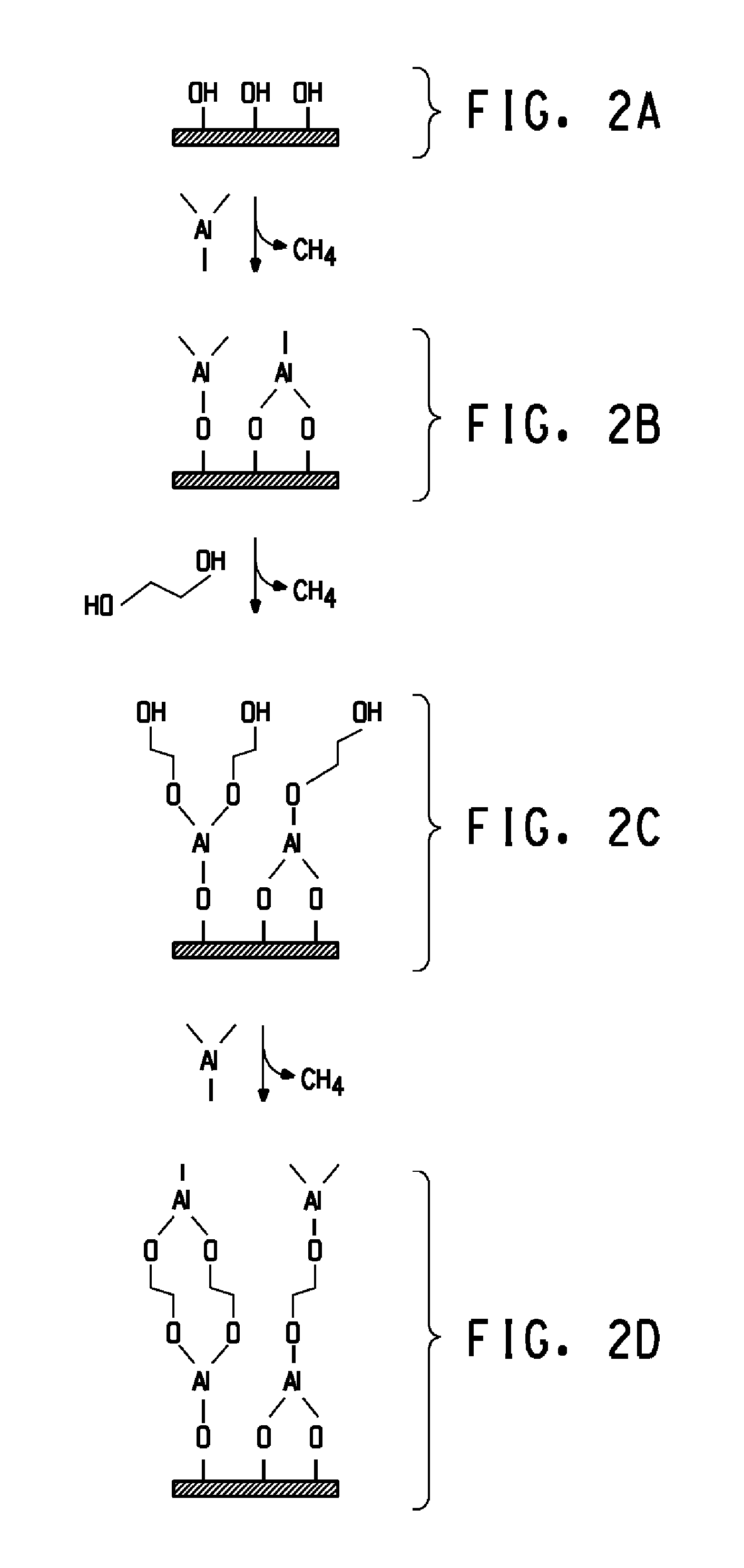Process for manufacturing gas permeation barrier material and structure
a technology of gas permeation barrier and manufacturing process, which is applied in the field of barrier materials, can solve the problems of unacceptably degrading device performance, affecting the performance of electronic devices, and still far short of the far more challenging requirements of electronic devices
- Summary
- Abstract
- Description
- Claims
- Application Information
AI Technical Summary
Benefits of technology
Problems solved by technology
Method used
Image
Examples
example 1
Alloy Fabrication and Water Vapor Transmission Measurements
[0103]In accordance with the present disclosure, alumina / alucone alloy films were grown on 100 mm diameter disks of 50-μm thick, flexible Kapton® EZ polyimide (available from DuPont, Wilmington, Del.) as a substrate.
[0104]The polyimide disks were affixed to conventional 4-inch diameter Si wafers and located in a hot-wall, viscous flow reactor. TMA (97%, Sigma Aldrich), EG (Reagent Plus >99%, Sigma Aldrich), and water (HPLC grade, Fisher Scientific) were used. Ultrahigh purity N2 (Airgas) was used as the carrier gas and the purge between reactant exposures. The baseline reactor pressure was 600 mTorr (80 Pa) with N2 flowing through the reactor. The substrate maintained at 135° C.
[0105]The film was formed by alternating deposition sequences of TMA / H2O for ALD deposition of alumina and TMA / EG for MLD deposition of alucone. Different alloy compositions were obtained by varying the number of ALD deposition cycles in each ALD depo...
example 2
Alloy Fabrication and Water Vapor Transmission Measurements
[0110]In accordance with the present disclosure, alumina / zircone alloy films are grown on 100 mm diameter disks of 50-μm thick, flexible Kapton® EZ polyimide (available from DuPont, Wilmington, Del.) as a substrate. Except as noted, the depositions are carried out using the same techniques employed for the samples of Example 1 above.
[0111]The MLD deposition of zircone is carried out using zirconium(IV) tert-butoxide having the chemical formula Zr[OC(CH3)3]4 and EG as the reactants. Different alloy compositions are obtained by varying the number of ALD deposition cycles in each ALD deposition sequence from 2 to 7, while each MLD deposition sequence comprised either one or two MLD cycles. The resulting films are denoted by the ratio of ALD to MLD cycles, wherein “n:m” represents a process in which each ALD deposition sequence includes “n” ALD cycles (n=2 to 7) and “m” MLD cycles (m=1 or 2). The ALD and MLD deposition sequences...
example 3
Alloy Fabrication and Critical Tensile Strain Measurements
[0114]Films for tensile testing are deposited on 75-μm thick polyimide substrates obtained from CS Hyde Company, Inc., Lake Villa, Ill. Samples are cut into rectangles of 100 mm×10 mm and then placed in the same hot-wall, viscous flow reactor used for the experiments of Example 1. The same deposition protocol is used to prepare 100 nm thick films having 1:1, 3:1 and 6:1 alumina / alucone alloy compositions. Pure alumina and alucone films are also made using the same process, but without alternating ALD and MLD deposition sequences.
[0115]Tensile testing is carried out using an Insight 2 mechanical load-frame (MTS Systems Corp., Eden Prairie, Minn.). The coated samples are tensioned at room temperature (25° C.) to a prescribed strain, which is measured using a model LE-05 laser extensometer (Electronic Instrument Research Corp., Irwin, Pa.).
[0116]After the tensioning, the samples are then inspected for the presence of cracks usin...
PUM
| Property | Measurement | Unit |
|---|---|---|
| Temperature | aaaaa | aaaaa |
| Temperature | aaaaa | aaaaa |
| Time | aaaaa | aaaaa |
Abstract
Description
Claims
Application Information
 Login to View More
Login to View More - R&D
- Intellectual Property
- Life Sciences
- Materials
- Tech Scout
- Unparalleled Data Quality
- Higher Quality Content
- 60% Fewer Hallucinations
Browse by: Latest US Patents, China's latest patents, Technical Efficacy Thesaurus, Application Domain, Technology Topic, Popular Technical Reports.
© 2025 PatSnap. All rights reserved.Legal|Privacy policy|Modern Slavery Act Transparency Statement|Sitemap|About US| Contact US: help@patsnap.com



